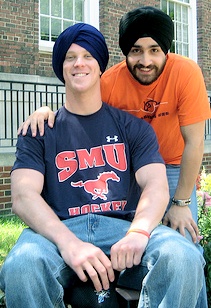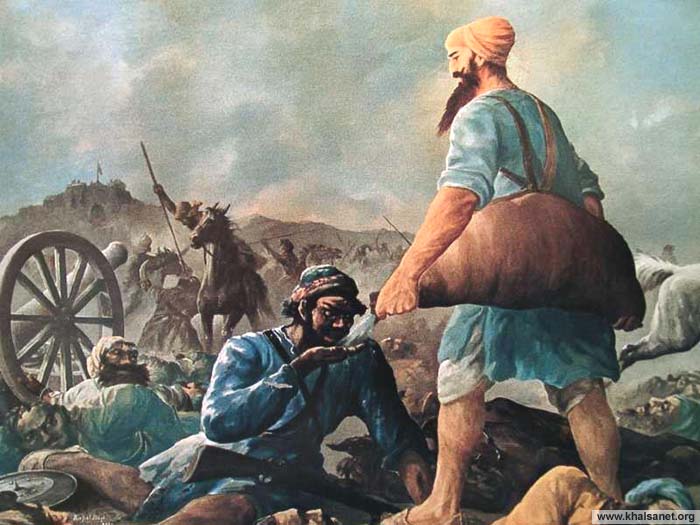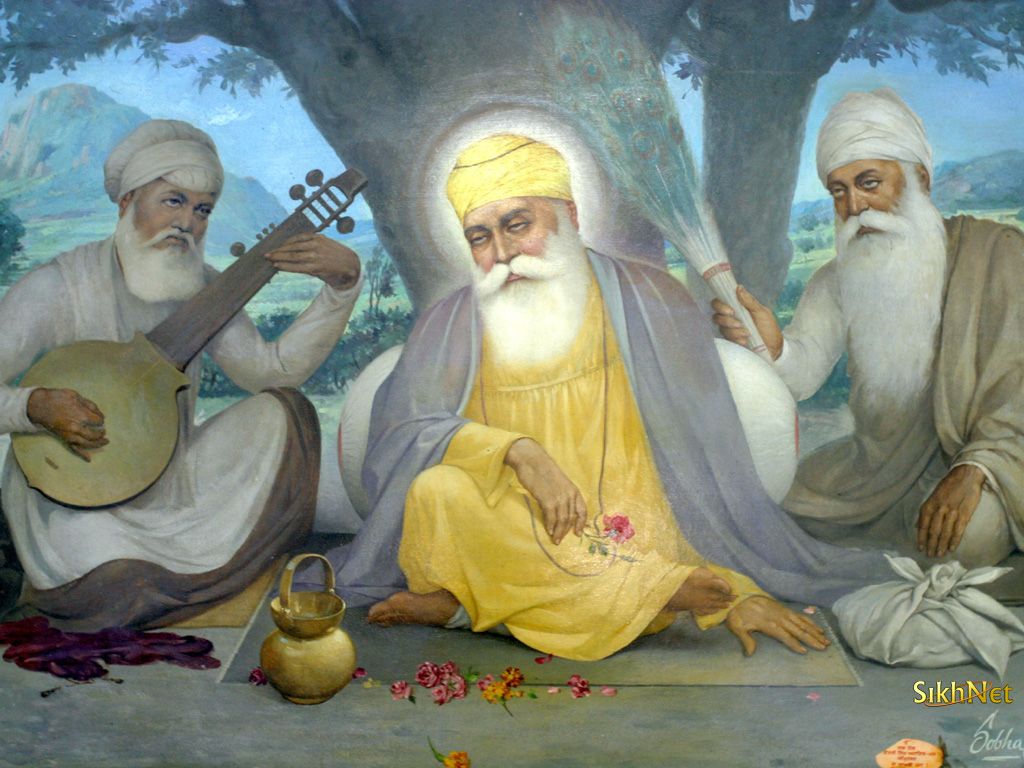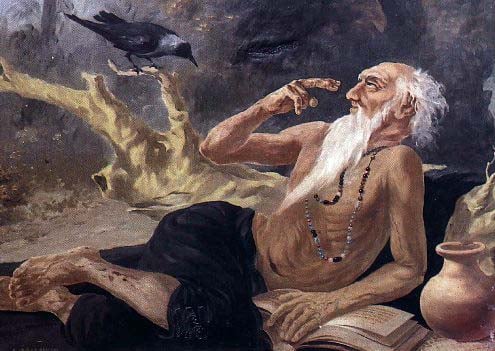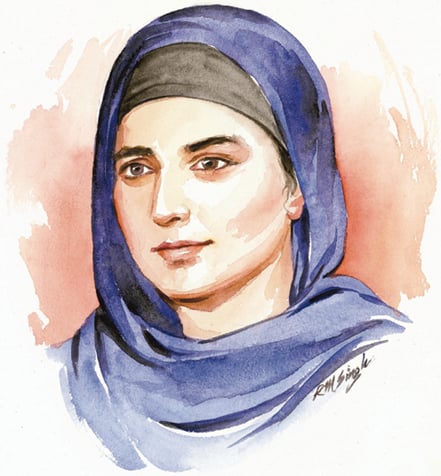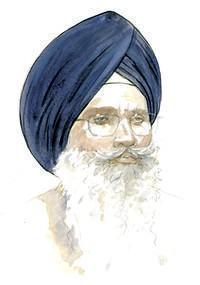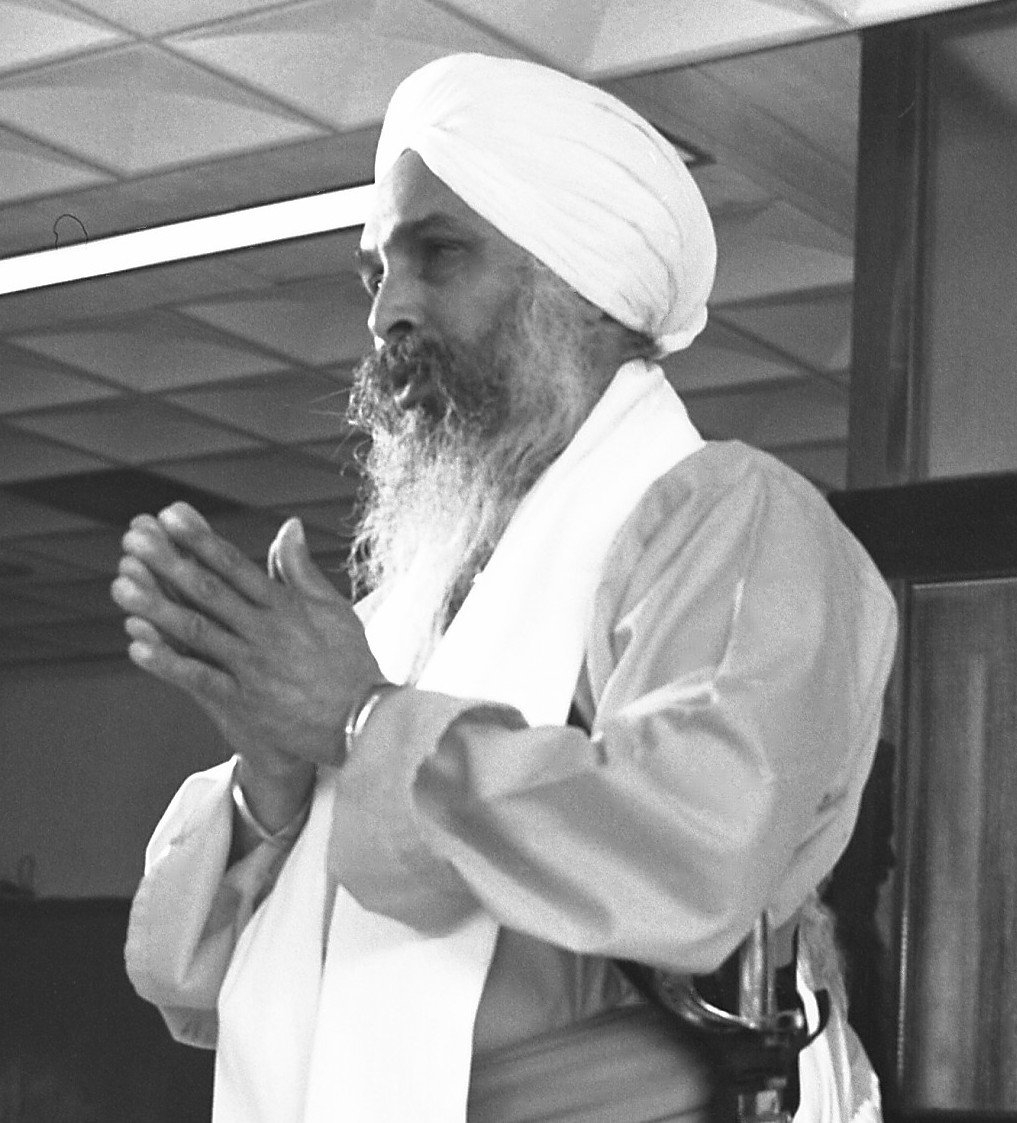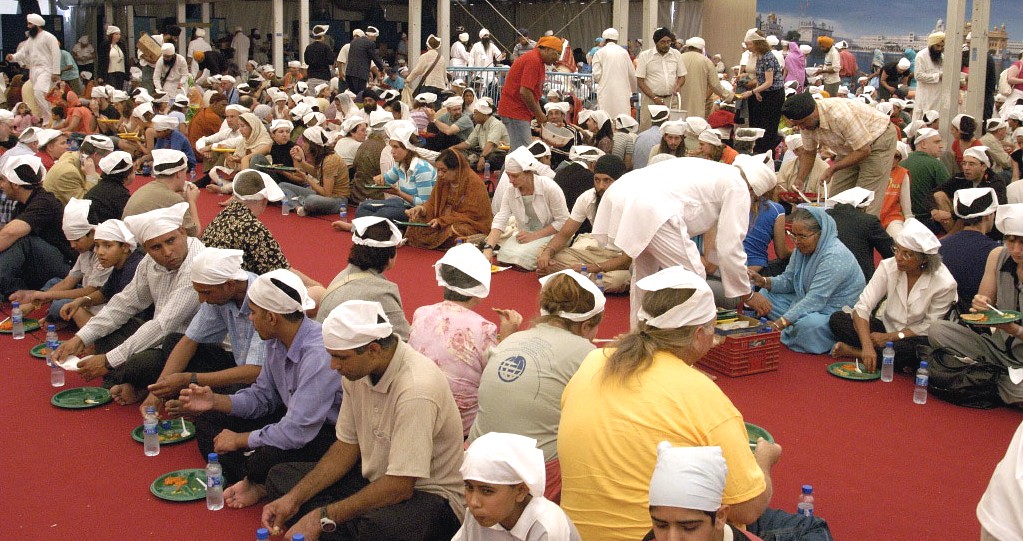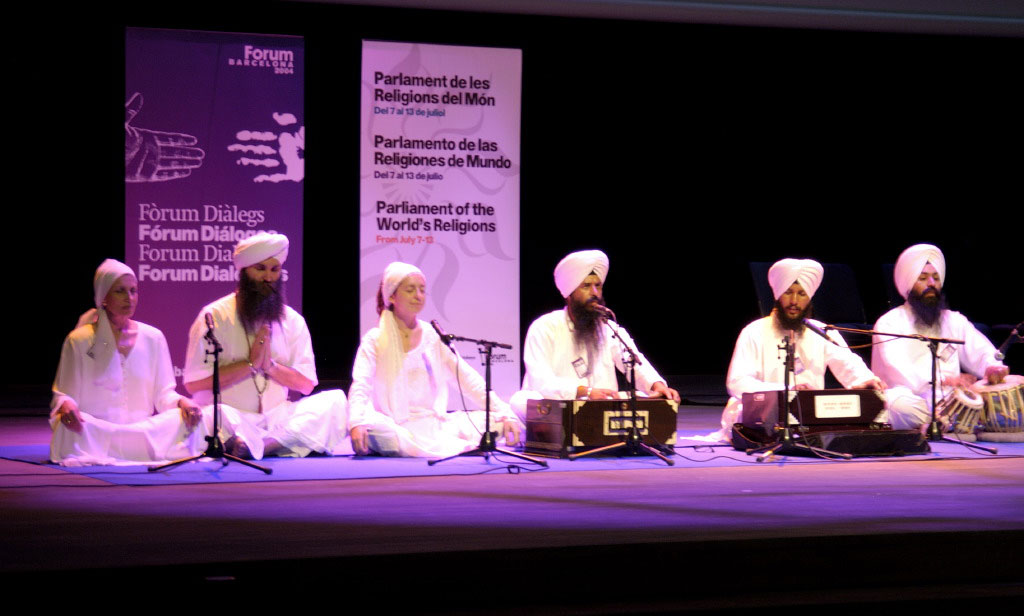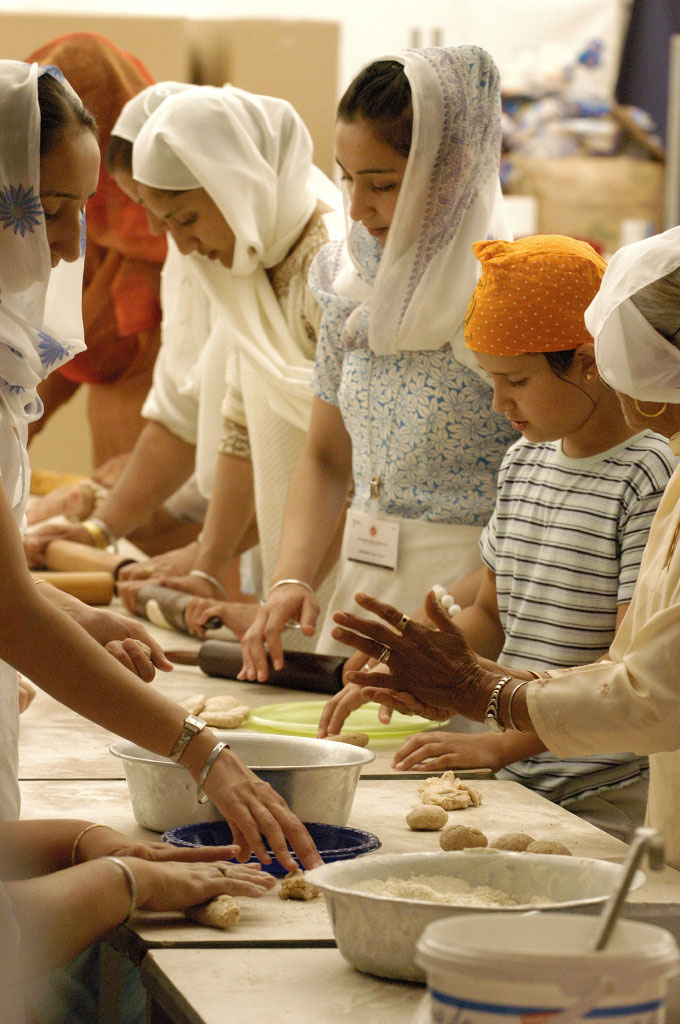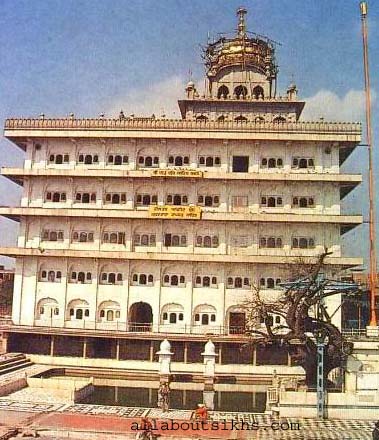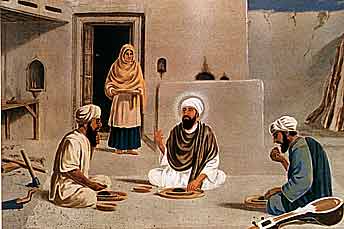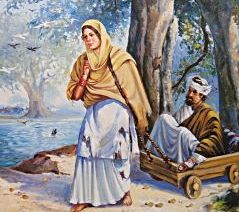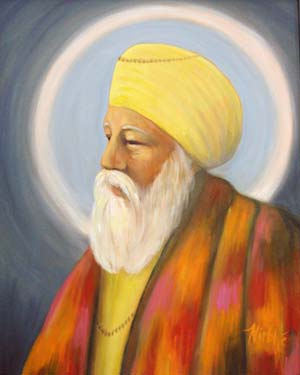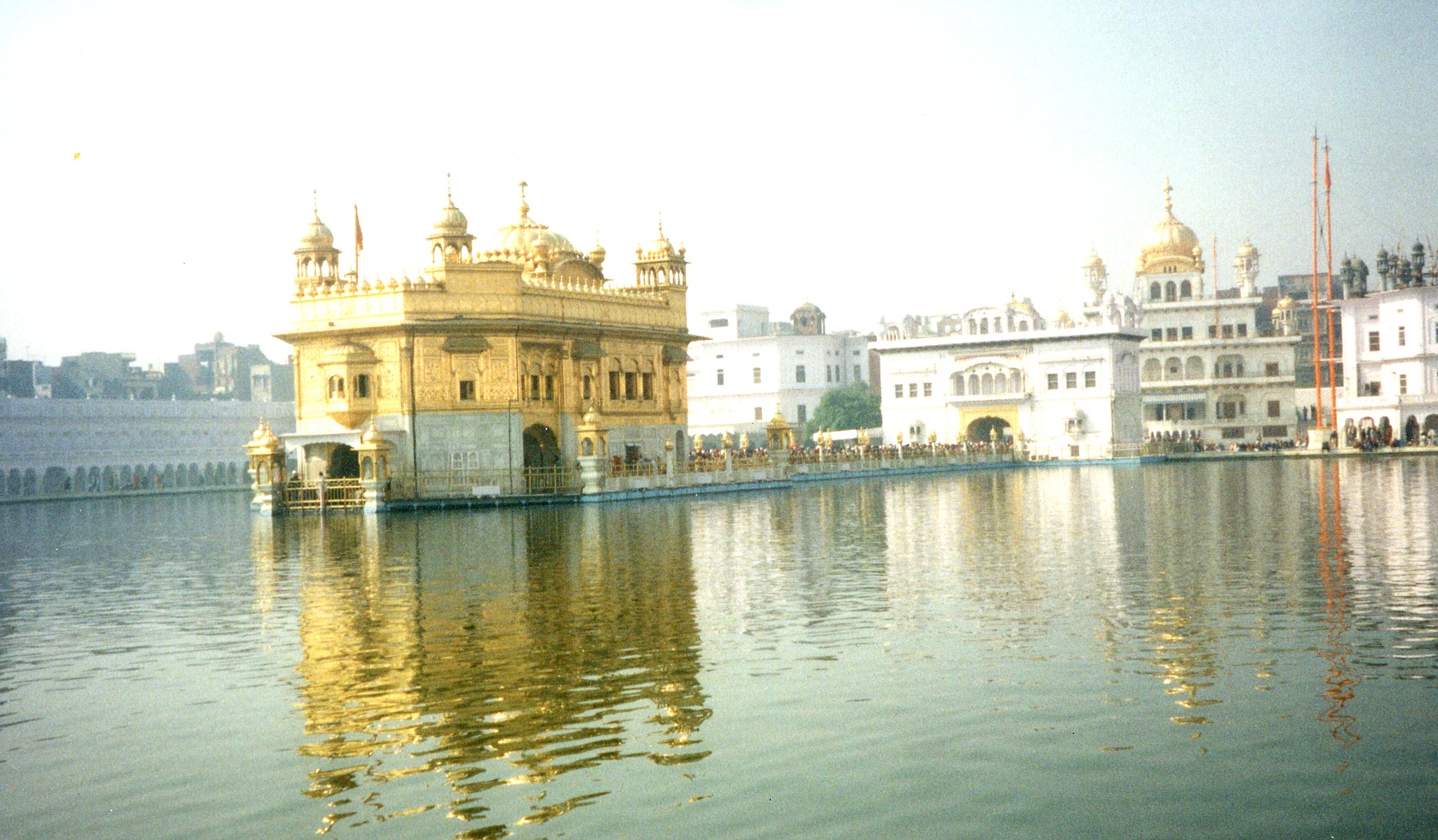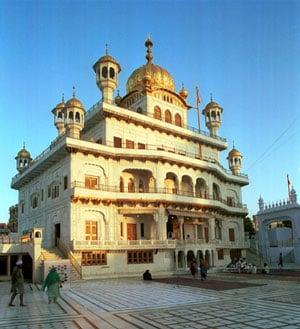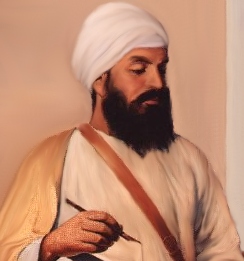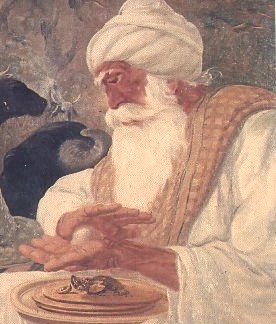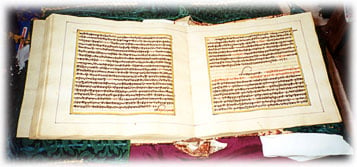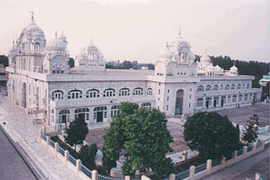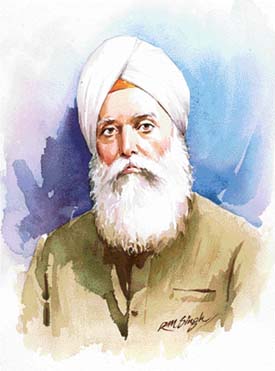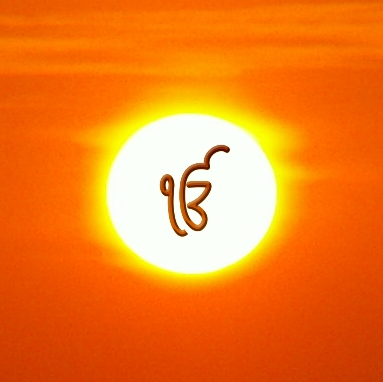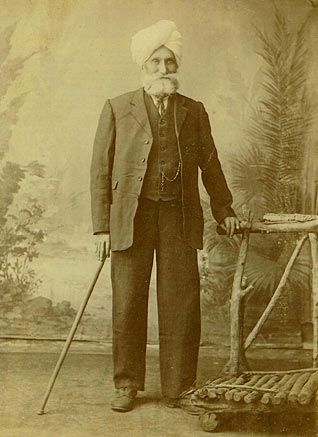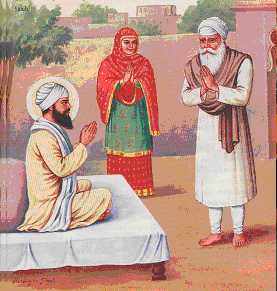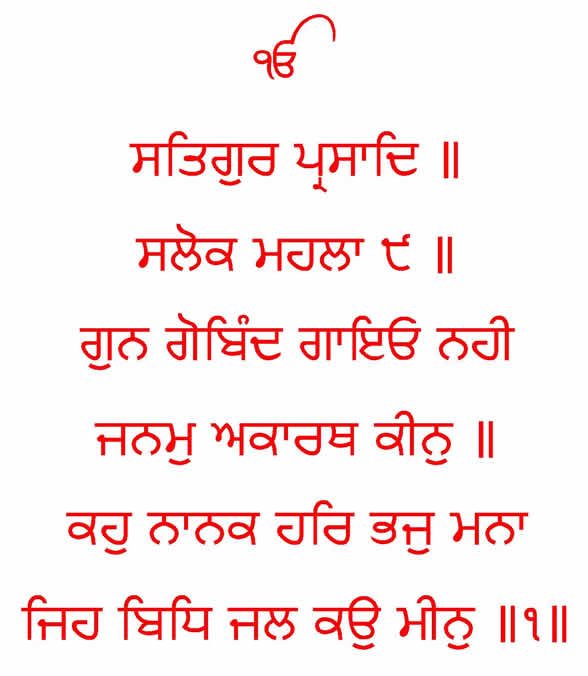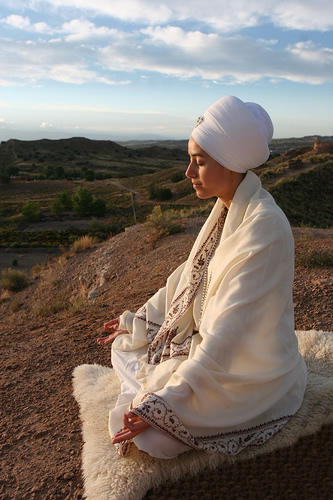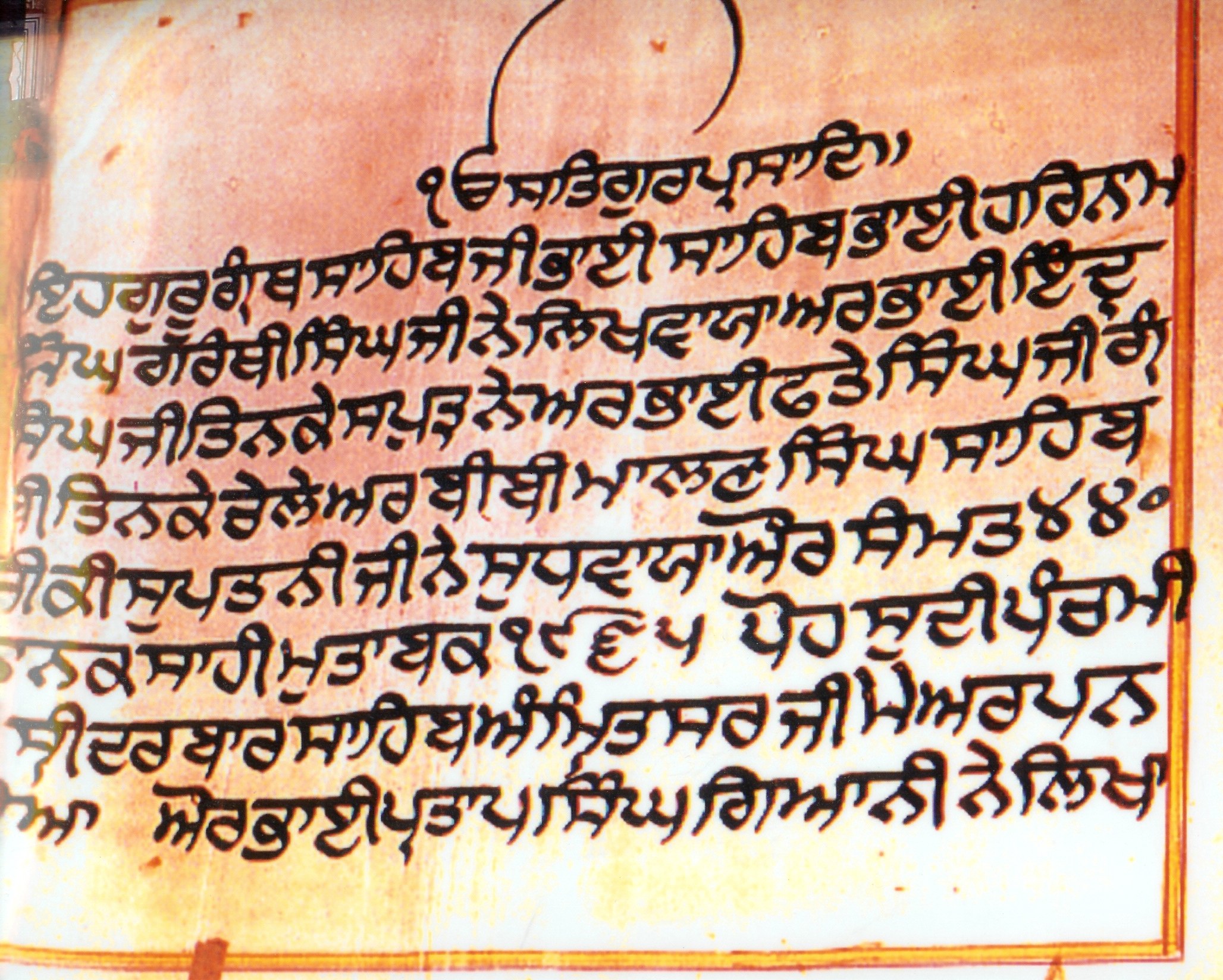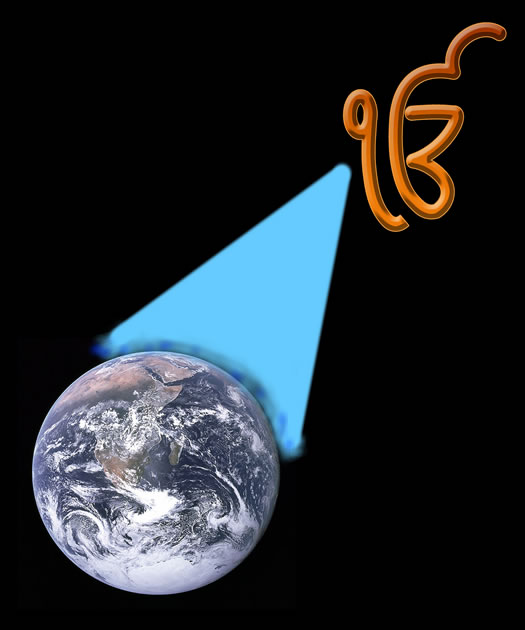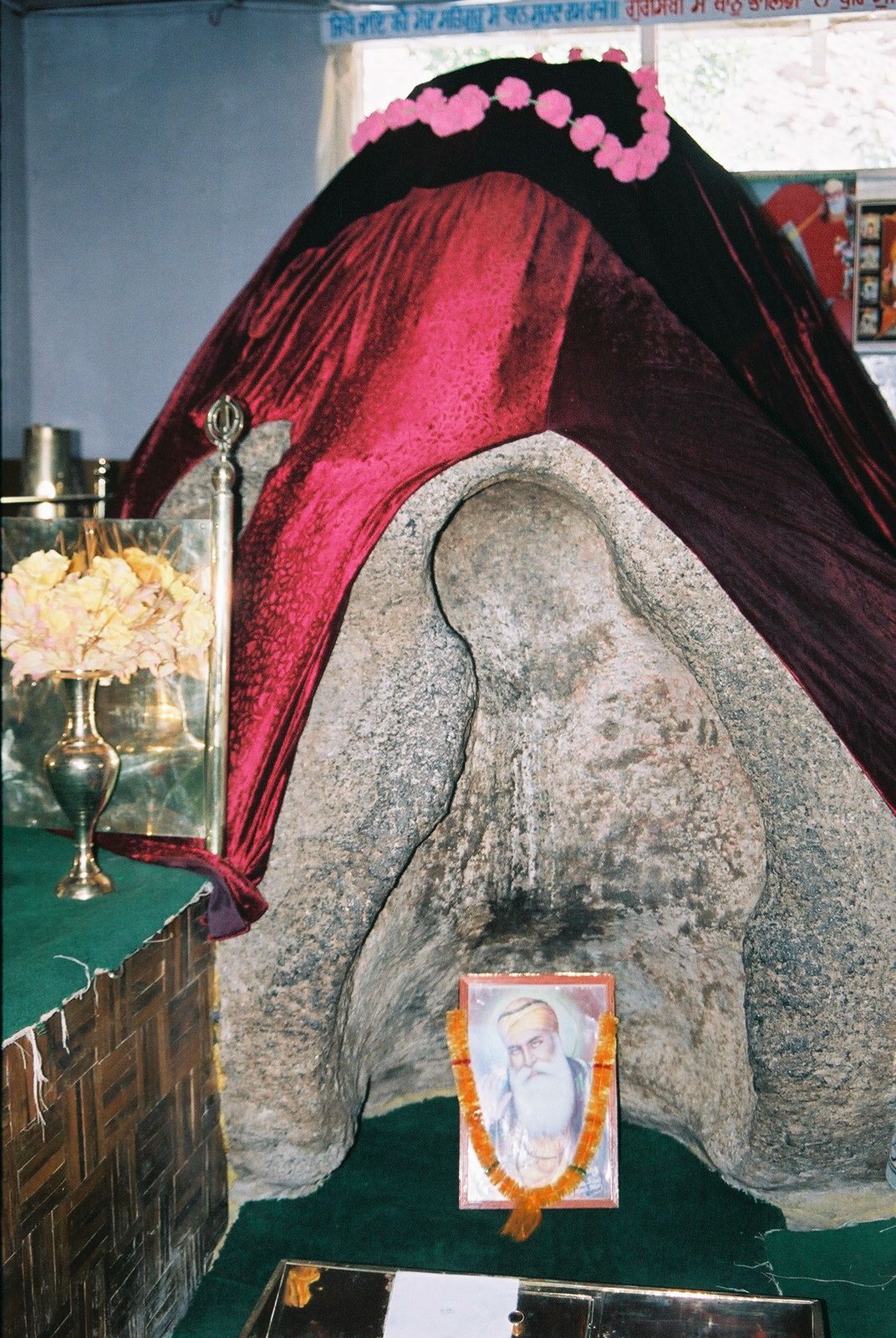SikhiWiki:Weekly featured article
Weekly featured article archive
2007 -
2008 -
2009 -
2010 -
1 - 2 - 3 - 4 - 5 - 6 - 7 - 8 - 9 - 10 - 11 - 12 - 13 - 14 - 15 - 16 - 17 - 18 - 19 - 20 - 21 - 22 - 23 - 24 - 25 - 26 - 27 - 28 - 29 - 30
31 - 32 - 33 - 34 - 35 - 36 - 37 - 38 - 39 - 40 - 41 - 42 - 43 - 44 - 45 - 46 - 47 - 48 - 49 - 50- 51 - 52 - 53 - 54 - 55
Today is Tuesday, October 28, 2025; it is now 13:03 UTC
- Week 1
The SikhiWIKI encyclopedia was a brand new experiment started in February 2005. The idea was to organise a web based encyclopedia of the Sikh Way of Life written collaboratively by many of its readers.
Lots of people have contributed to this experiment and many are constantly improving SikhiWIKI, by continuously making changes, all of which are recorded on the page history and the 'Recent Changes' page.
Nonsense and vandalism are usually removed quickly. Feel free to dive in take a look at the Tutorial, play in the sandbox, get comfortable and start contributing to our SikhiWIKI!. Remember this is Sewa for the Panth! Read more here
Our motto is: "Anything is possible! We are vast and unlimited." Your tax-deductible gift to SikhiWiki is what will make the SikhiWiki service fast, reliable, and give it the resources needed for continued growth. We are building SikiWiki to last. It is a long-term project - a gathering place for us and our children as well as a legacy to future generations. .....More
view – talk – edit – history
- Week 2
Guru Nanak (1469-1539) promulgated a unique and universal philosophy of humanism in the Indian sub-continent as the renaissance was taking place in Europe (14th to 16th centuries) and scientists were challenging illogical religious concepts and beliefs.
The Guru carried his message far and wide to South Asia and the Middle East. He held discussions with religious leaders: Hindus—(Brahmans, Sidhs and Jogis), Muslims—(Sufis, mullahs and Qazis), Jains and Buddhists in India, the Middle East, Tibet and Ceylon (Sri Lanka), etc
During his travels (odysseys, Udasis) Guru Nanak challenged the ancient mythology, wrong religious concepts and rituals with which the peoples of South Asia and Middle East were shackled for centuries. People were unable to express their freewill in any aspect of their lives because their lives were controlled by their religious and political authorities.
Guru Nanak launched his movement to liberate the masses form ignorance and religious and political tyranny. His philosophy, termed as ”Nanakian Philosophy‘, is embodied in his Bani (Word), which has been incorporated in the Aad Guru Granth Sahib (AGGS). .....More
view – talk – edit – history
- Week 3
International Turban Day is celebrated on April 13th every year. This event was started in 2004 to bring awareness of the strict requirement on Sikhs to don the turban as a mandatory part of their religion.
In the West since 9/11 in 2001, the turban, has attracted negative attention due to the wrongful linking of this garment with Osama bin Laden, the Muslim leader of al Qaeda who has often been pictured wearing a turban.
Due to the vast news and media coverage of Osama bin Laden following 9/11, many men wearing a turban and beard and Punjabi styled clothing articles (long vest or longer shirt) have been looked upon with suspicion, with some innocent people even being killed or wounded by uninformed and even deranged westerners bent on revenge, who just assumed that any bearded man, wearing a turban and beard was a Muslim.
However, this perception is wrong, as the vast majority of people in Western countries who wear turbans are actually Sikhs. Given that many thousands of Sikhs died fighting against the same sort of Muslim fundamentalist terrorists that bin Laden's group al Qaeda and the Taleban espouse today, the irony of such an uninformed assumption is tragic, especially since most Muslims living in the West do not wear turbans. .....More
view – talk – edit – history
- Week 4
Bhai Kanhaiya (1648 - 1718), was a Sikh of Guru Tegh Bahadur and was the founder of the Sevapanthi or Addanshahi sect of the Sikhs. Bhai Sahib was born in a Dhamman Khatri family of Sodhara near Waxirabad in Sialkot district (now in Pakistan).
His father was a wealthy trader, but he himself being of a religious bent of mind left home when still very young and roamed about with sadhus and ascetics in search of spiritual peace. Bhai Sahib’s contribution to Sikhi:
- "Fore-runner of the Red Cross Movement,"
- "Treat all Human beings as equal"
- “Selfless service to All without Discrimination”
His quest ended as he met Guru Tegh Bahadur (1621 - 1675) and accepted initiation at Guru Ji hands. .....More
view – talk – edit – history
- Week 5
Gurmat Sangeet or Shabad Kirtan has been an integral part of Sikh worship from the very beginning. Hymn-singing was in fact the earliest form of devotion for the Sikhs.
Even during the time of Guru Nanak, the disciples assembled together to sing shabads, i.e. hymns composed by the Guru which render praise to the Lord. Thus, Kirtan has been appropriated into the regular Gurdwara service for a long time.
Although Kirtan can be very touching and soul-stirring, Sikh kirtan abstains from all outward expression or frenzy in the form of clapping and dancing. Praise is offered to the Supreme Being who is without form, nirankar and not to a deity in any embodiment or incarnation.
The texts of shabad kirtan are from the Holy Book of Sikhs known as the Guru Granth Sahib, or Adi Granth, compiled by Guru Arjan in 1604 or from from the Dasam Granth and also sometimes from the compositions by Bhai Gurdas or Bhai Nand Lal. Probably no other religion shows a closer relationship between music and its scriptures than does Sikhism. The Holy Book is organized according to ragas, 31 in number, to which the poetic hymns belong. .....More
view – talk – edit – history
- Week 6
When Farid ji was just a few years old, his mother taught him his prayers. The boy asked what was gained by his prayers. His mother replied 'sugar'.
Accordingly, she used to hide some sugar under his prayer-carpet, and when he had finished his prayers, she would draw the mat forth, and give the sugar to Farid as a reward for his devotion.
On one occasion, when his mother was absent, he prayed a great deal, and, it is said, a great supply of sugar - a miraculous gift from God - was found under his carpet. Some he ate himself and the rest he gave to his playfellows. He related the circumstance to his mother on her return. It was then his mother gave him the surname Shakar Ganj, meaning a "treasury of sugar".
There are 134 hymns of Sheikh Farid incorporated in the Guru Granth Sahib. Many Sikh scholars ascribe them to Farid Shakarganj (1173 – 1265) of Pak Pattan, a disciple of the Sufi Qutbuddin Bakhtiyar Kaki. The tenth in succession to his post was Shaikh Brahm (Ibrahim), also known as Farid Sani or Farid the 2nd, and it is this Farid who Guru Nanak Dev ji met on two occasions. .....More
view – talk – edit – history
- Week 7
In Sikhism, the holy scriptures have clearly stated that the Sikh woman must always be regarded as an equal with man and has all the rights and privileges enjoyed by a man.
She is considered to have the same soul as man and has same right to grow spiritually.
In this faith since about 1499, the Sikh woman is allowed to lead religious congregations, to take part in:
- Akhand Path (the continuous recitation of the holy scriptures),
- to perform kirtan – Sikh spiritual hymn singing set to music,
- to work as Granthi (priest) or preacher and
- to participate freely in all religious, cultural, social, political and secular activities.
Sikh women have played a glorious part in Sikh history and have proven themselves as equal in service, devotion, sacrifice and bravery. Examples of their moral dignity, Sewa (service) and self sacrifice are and will remain an ever-lasting source of inspiration for all the peoples of the world.
Women are the backbone of the history of the Sikhs; their culture, their values and their traditions - yet there is little written about the huge contribution by the Sikh women to the great history of this religion. .....More
view – talk – edit – history
- Week 8
The turban is closely associated with Sikhism. Sikhism or Sikhi is the only religion in the world in which the wearing of a turban is mandatory for all adult males.
Vast majority of people who wear turbans in Western countries are Sikhs. The Sikh turban is also called the pagdi or dastaar, which is a more respectful word in Punjabi for the turban.
All these words refer to the garment worn by both men and to a lesser extent by women to cover their heads. Some women prefer to wear a chunni instead of a turban.
The dastaar is a headdress consisting of a long scarf-like single piece of fine cloth wound round the head or sometimes over an inner "hat" or patka. Traditionally in India, the turban was only worn by men of high status in society; men of low status or of lower castes were not allowed or could not afford to wear a turban.
Sikh's are famous for their distinctive turbans. The turban represents respectability, and is a sign of nobility. .....More
view – talk – edit – history
- Week 9
We should not increase our burden of karmas by eating higher life forms. There is karmic value in every kind of thing we use in this world. The air we consume, the water we use, we have to pay for.
The light of the sun or moon is also not free...and this green grass is also to be paid for - nothing is free. Everything has a Karmic value.
Depending on the "Jun" (life-form), there is a price to be paid. Lower life forms have a lower price to pay. Fruits and plants have a lower spiritual price than animal life forms. So why take the higher burden?
We now refer to this sensitivity with new and fancy words like "our green foot print", "environmentally friendly", "eco-friendly", etc. However, all these words narrow down to a way of life that does the least damage to the world.
If you are to construct a house, you don't make it using gold or silver or jewels. If you can, you make the house of stone - Stone is very strong and cheap. So, why don't you make your own house with stone and brick instead of gold? This body is like a house. .....More
view – talk – edit – history
- Week 10
Ardas is a unique prayer; It's an appeal to Waheguru; a way to address and petition the Almighty; to gain spiritual energy; to connect with God.
It is a very well-known Sikh prayer that was not written in its entirety by the Gurus. The Ardas is an ever changing plea, the contents of which depend on local concerns and personal issues.
The word Ardĝs ( ਅਰਦਾਸ ) is derived from Persian word 'Arazdashat', meaning a request, a supplication, a prayer, a petition or an address to a superior authority.
The power that this single prayer possesses is astonishing. Starting with "Pritham bhagautee simar kai, Gur Nanak laee dhiaa-e" and ending with "Naanak naam charhdee kalaa, tayray bhaanay Sarbat da bhala". The ardas encompasses so many Sikh and Humanistic values. It is more than just a prayer; it is a new concept of therapy for the elevation of the human spirit, mind and body.
The Ardas is usually done standing up with folded hands. The beginning of the Ardas is strictly set by the tenth Sikh Guru, Guru Gobind Singh. When it comes to the conclusion of this prayer, the devotee uses the word Waheguru .....More
view – talk – edit – history
- Week 11
Langar or free kitchen was started by the first Sikh Guru, Guru Nanak Dev Ji. It is designed to uphold the principle of equality between all people of the world regardless of religion, caste, colour, creed, age, gender or social status.
In addition to the ideals of equality, the tradition of Langar expresses the ethics of sharing, community, inclusiveness and oneness of all humankind. "..the Light of God is in all hearts." (sggs 282).
For the first time in history, Guruji designed an institution in which all people would sit on the floor together, as equals, to eat the same simple food. It is here that all people high or low, rich or poor, male or female, all sit in the same pangat (literally "row" or "line") to share and enjoy the food together.
The institution of Guru ka Langar has served the community in many ways. It has ensured the participation of women and children in a task of service for mankind. Women play an important role in the preparation of meals, and the children help in serving food to the pangat. Langar also teaches the etiquette of sitting and eating in a community situation, which has played a great part in upholding the virtue of sameness of all human beings; providing a welcome, secure and protected sanctuary. .....More
view – talk – edit – history
- Week 12
Sikhism is one religion, which is founded on the principles of global Interfaith communities and mutual Inter-community respect and harmony. The founders of Sikhism have, since 1469, defined and preached the principles of interfaith respect, dialogue and harmony.
A Sikh by definition must respect and accept all other world religions. Guru Nanak, the founding Guru of the Sikh faith said, "Your [God's] Divine Light is contained in all; everyone belongs to You." (SGGS page 414) So in this religion the holiness of all humans is recognised and respected, irrelevant of the person's religion.
Further, the Sikh must protect, guard and allow the free-practise of the customs and rituals of other religions. The SGGS says on page 142: One who recognizes that all spiritual paths lead to the One shall be emancipated.
The following are remarks made by distinguished personalities about the Sri Guru Granth Sahib and its interfaith message:
Arnold Toynbee: The Adi Granth is remarkable for several reasons. Of all known religious scriptures this book is the most highly venerated.
Pearl S. Buck: They (the Sikh Scriptures) speak to persons of any religion or of none. They speak for the human heart and the searching mind.
Dr. S. Radhaknshnan: The barriers of seas and mountains will give way before the call of eternal truth which is set forth with freshness of feelings and fervour of devotion in the Adi Granth. .....More
view – talk – edit – history
- Week 13
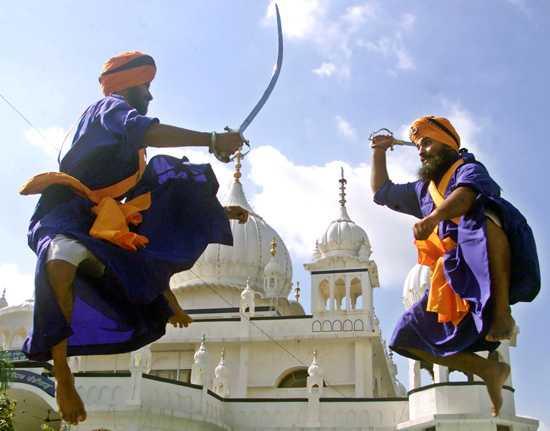
Gatka is an ancient martial art which has been thoroughly battle-tested and has existed in northern India for many thousands of years.
Although it uses the sword or (kirpan) as its primary weapon, many other weapons are available to the Gatka master.
Today, this art exists exclusively amongst the Sikhs who have passed down the flamboyant techniques through generations, since their sixth Guru, Guru Hargobind wore the two swords of Miri (temporal, worldly) and Piri (spiritual, transcendental).
The Sikhs have been responsible for the revival of this early art ensuring it's survival despite mass persecution of the native population in India by foreign invaders like the Mughals and others for many hundreds of years.
Gatka is a complete martial system which uses spiritual, mental and physical skills in equal portions to help one become fully competent in defending themselves and others. It is a system that can only be used as a last resort: "When all other means have failed, it is proper to take the sword in one’s hand" (Guru Gobind Singh) .....More
view – talk – edit – history
- Week 14
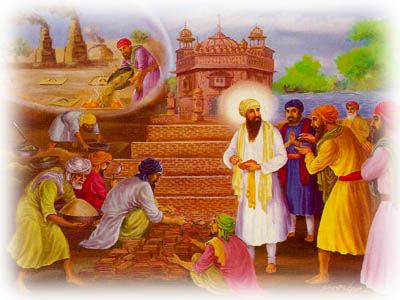
Dasvandh or Dasaundh, literally means a "tenth part" and refers to the practice among Sikhs of contributing in the name of the Guru one-tenth of their earnings towards the common resources of the community.
This is their religious obligation — a religious requirement or duty; a form of seva or humble service which is highly valued in the Sikh system.
The concept of dasvandh was implicit in Guru Nanak’s own Gurbani in the line: "ਘਾਲਿ ਖਾਇ ਕਿਛੁ ਹਥਹੁ ਦੇਇ ॥ ਨਾਨਕ ਰਾਹੁ ਪਛਾਣਹਿ ਸੇਇ ॥੧॥ One who works for what he eats, and gives some of what he has - O Nanak, he knows the Path (1)" (SGGS p 1245)
The idea of sharing and giving is symbolised by the institutions of langar (community kitchen) for the sangat (holy assembly) that the Guru has established.
In the time of Guru Amar Das, Nanak III, a formal structure for channelizing Sikh religious giving was evolved. The Guru set up 22 manjis or districts in different parts of the country, each placed under the charge of a pious Sikh who, besides preaching Guru Nanak's word, looked after the sangats within his/her jurisdiction and transmitted the disciple’s offerings to the Guru. .....More
view – talk – edit – history
- Week 15

Rehat Maryada is the Sikh Code of Conduct by which all Sikhs need to regulate their lives and to control their needs and actions. This Code of Conduct is the guideline by which a Sikh should live his or her life.
The main theme through this regulation is the reliance on a "disciplined life" – a Sikh is bound by the Guru to lead a simple life where the mind has a control over the various desires and urges that are trying to overpower the person's mind.
The Guru tells us that for a "pure" Sikh, "True are his actions; true are his ways." (SGGS p283) and "Those who speak are liberated, and those who listen are liberated; those who keep the Rehat (discipled code), are not reincarnated again." (SGGS p1230). In 1950 the SGPC formulated a formal Code of Conduct to provide guidelines for all Sikh individuals and communities around the world. Its implementation has resulted in a high level of uniformity in the religious and social practices of Sikhism. This Rehat Maryada provides some direct and effective guideline for a committed Sikh…....Continued
view – talk – edit – history
- Week 16
A Sikh is required by the Sikh Gurus to live a disciplined and ordered life by doing pure and righteous deeds and actions. The following are activities that a Sikh should engage in:
Read Gurbani - The initiated Sikh is asked by the Panj Piare during the Amrit Sanchar ceremony to recite the 5 banis every morning as a commitment to the Sikh Gurus and Waheguru.
Wear the 5Ks or panj kakaar/kakke: These are the five items of faith that a baptised Sikh wears at all times as per the command of the tenth Sikh master, Guru Gobind Singh. The Five Ks are not merely symbols but articles of faith which collectively form the external visible symbols to clearly and outwardly advertise, display and identify the love of the Sikh for the Guru.
To kill the 5 Evils or five thieves referred to in Sikh Scripture; these are the five major weaknesses of the human personality at variance with its spiritual essence. They are: Kam (Lust), Krodh (Rage), Lobh (Greed), Moh (Attachment) and Ahankar (ego).
Practice the 5 Virtues - For Sikhs, the final goal of life is to reunite or merge with God (Mukti). The Sikh Gurus taught that to achieve this goal it was important to work hard at developing positive human qualities which lead the soul closer to God.
Simran and Sewa and also Three Pillars: Naam Japna, Kirat Karni and Vand Chakna .....More
view – talk – edit – history
- Week 17
Seva or Karseva also shortened to ‘Sewa’ is a word used to refer to "selfless service", performed without any thought of reward or personal benefit.
The person performing this service is called a Sevadar. All Sikhs are encouraged by their Guru (Sri Guru Granth Sahib) to perform Seva or Selfless Service.
This is not only good for the community but is also good for the moral uplifting of the person performing the service. You will find Sikhs engaged in free service in Gurdwaras washing dishes, performing kirtan or cleaning the floors, etc.
Sikhs are also encouraged to help the community by performing unpaid work in hospitals, old peoples' homes, community centres, etc. Volunteers engaged in Seva or Sevadars find that this activity forms an essential part of their life, providing spiritual fulfilment and practical benefits.
Sikhism is founded on principles of "Sarbat da bhalla" - "working towards the common good". For Sikhs, this means reaching out to serve and to uplift all of humanity as an expression or devotion to the Creator. Many other Sikh institutes like Guru-ka-Langar, Kirtan, Paath, etc depend on the performance of Seva by many in the congregation. So the principles of Seva underpins many of the Sikh values and institutions - Such is the importance given to Seva in Sikhism. .....More
view – talk – edit – history
- Week 18
Many sacred Sikh shrines can be found in the Sikh holy city of Amritsar. Of particular importance are the five sacred pools in this city.
These are called sarovars and it is the practice of some Sikhs to have a dip in all five of these holy pools. The ritual, apart from being good exercise, acquaints one with the importance of these five sites.
These five holy Sarovars are: Amritsar (1586) (now used more to refer to the city rather than the sarovar), Santokhsar (1587-88), Ramsar (1602-03), Kaulsar (1627), Bibeksar (1628). Among these famous five historical shrines is the famous Gurdwara, Ramsar. This is located south to south-east of the most important landmark for the Sikhs, Harimandir Sahib.
Alongside the Ramsar Gurdwara is situated the smallest of the five sarovars called Ramsar. This is the location where in 1603, Guru Arjun Dev, the fifth Sikh Guru spent over a year in semi-seclusion along with his scribe, Bhai Gurdas to compile the holy Adi Granth, the sacred Sikh scripture for the first time. .....More
view – talk – edit – history
- Week 19
After teaching people in Lahore to live honestly Guru Nanak ji returned to Talwandi to see his parents.
Then after a short stay, he proceeded with Mardana, his long time companion on a extensive journey to visit the sacred places of pilgrimage of the Hindus. On the way they reached Bhai Lalo’s workshop at Saidpur, presently known as Eminabad in Pakistan.
Bhai Lalo earned his living by honest work or Kirat Karni. He was nearly seventeen years older than Guru Nanak. When Lalo saw two holy men coming towards him, he put aside his work and spread a bed for them and went to get some food (or langar) for them.
As the kitchen was supposed to be the most pure and clean place in a house, Bhai Lalo asked Guru Nanak to come there and have his meal. Guru ji said “Bhai Lalo, every place is clean and pure for us. Please bring the meal here.” So the meal was brought out and Mardana then divided it into three parts and they all ate it together.
“This meal tastes like nectar. What has been put in it?” asked Bhai Mardana. Guru Nanak replied “That was the taste of truthfulness and honesty that you tasted. This taste is above the taste of worldly delicacies.” .....More
view – talk – edit – history
- Week 20
In the era of Guru Ram Das ji, one cannot leave out Rajni, youngest daughter of Rai Duni Chand, revenue collector (kardar) of Patti.
Rajni was a Sikh, a disciple of the Guru. One day she was sitting with her sisters admiring some new clothing they all had received from their father.
The girls were ecstatic and exclaiming how good their father was to them. Rajni observed that all gifts are ultimately from God. Their father was merely an instrument of His greatness.
Unfortunately for her, her father overheard her comment and became very angry. It was not the first time that she incurred his wrath because of her extreme piety.
The infuriated father, believing her to be an ungrateful wretch, married her to a leper with a taunt that he would see how her God would help her lead a normal life. The leper was severely disfigured and a foul smell came from his body.
The poor girl had accepted her fate unchangingly and worked hard to maintain herself and her crippled husband.
She kept repeating the name of God (Naam Simran), and was certain that God was testing her with this turn of events. She was forced to beg for a living. Still she bathed, fed and cared lovingly for her leper husband, never losing faith. .....More
view – talk – edit – history
- Week 21
Sikhism is the youngest of the world religions; it is barely five hundred years old. Its founder, Guru Nanak, was born in 1469. Guru Nanak spread a simple message of "Ek Ong Kar": we are all one, created by the "One Creator of all Creation".
This was at a time when India was being torn apart by casteism, sectarianism, religious factions, and fanaticism. He aligned with no religion, and respected all religions. He expressed the reality that there is only one God and many paths, and the Name of God is Truth, "Sat Nam".
Guru Nanak's followers were called Sikhs -seekers of truth. He taught them to bow only before God, and to link themselves to the Guru, the Light of Truth, who lives always in direct consciousness of God, experiencing no separation. Through words and example, the Guru demonstrates to followers how to experience God within themselves, bringing them from darkness into light.
The first Sikh Guru was a humble bearer of this Light of Truth. He opposed superstition, injustice, and hypocrisy and inspired seekers by singing divine songs which touched the hearts of the most callous listeners. These songs were recorded, and formed the beginnings of the Sikhs' sacred writings, later to become the "Siri Guru Granth Sahib". ....Continued
view – talk – edit – history
- Week 22
Harmandar Sahib, in Punjabi literally means "Temple of God". This is the most important Gurdwara of historical, spiritual, and emotional significance to the Sikhs and is situated in Amritsar, Punjab in north west India.
Guru Amar Das, the third Sikh Guru first conceived of this sacred place; although construction did not begin until Guru Ram Das became the Guru. Maharaja Ranjit Singh had the structure plated with gold in the early 19th century for the first time. During 2003, the gold plating was replaced with new gold.
- "Shining in the morning light, the gilded splendour of its panelling, big dome and small minarets, this temple is a fairy world palace to the devotees of the Sikh faith. Certainly, the first look brings onto the innocent eye the image of a transcendent fact.
The 'loving sight' peering into heaven from the legends of the miraculous cures by the touch of the water in the pool of nectar, in which the shrine stands makes for ecstatic awareness. The vision has been received by millions of pilgrims who have come here for centuries from near and far." (quoted from a devotee) .....More
- Week 3
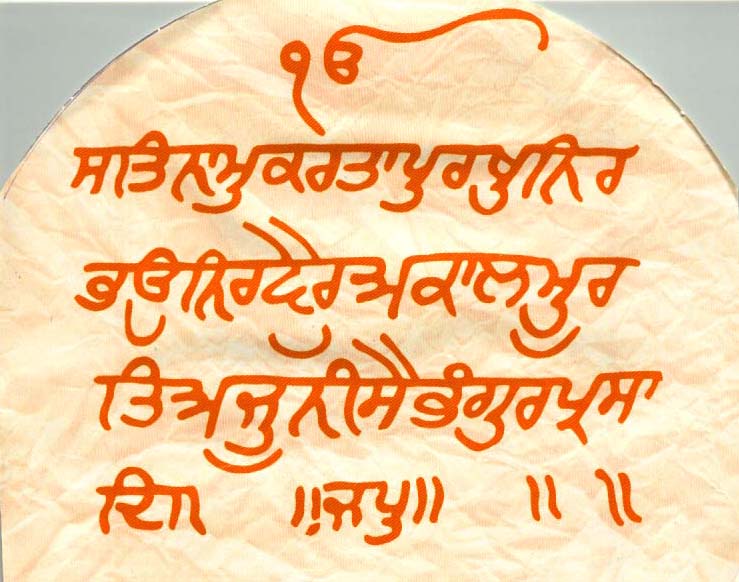
Mool Mantar is the most important composition contained within the Sri Guru Granth Sahib; it is the basis of Sikhism. It’s importance is emphasised by the fact that it is the first composition to appear in the holy Granth and that it appears before the commencement of most of the Raag section within this sacred volume.
Original Gurmukhi Text:
ੴ ਸਤਿ ਨਾਮੁ ਕਰਤਾ ਪੁਰਖੁ ਨਿਰਭਉ ਨਿਰਵੈਰੁ ਅਕਾਲ ਮੂਰਤਿ ਅਜੂਨੀ ਸੈਭੰ ਗੁਰ ਪ੍ਰਸਾਦਿ ॥... ॥ ![]() Play Audio
Play Audio
The Mool Mantar is said to be the first composition uttered by Guru Nanak Dev upon enlightenment at the age of about 30. Being the basis of Sikhism, it encapsulates the entire theology of this faith, and as a result, it is also the most difficult composition to fully understand.
The succeeding bani called the Japji Sahib and the rest of the sacred Granth totalling 1430 pages, are efforts to explain that which is contained within the Mool Mantar. .....More
view – talk – edit – history
- Week 24
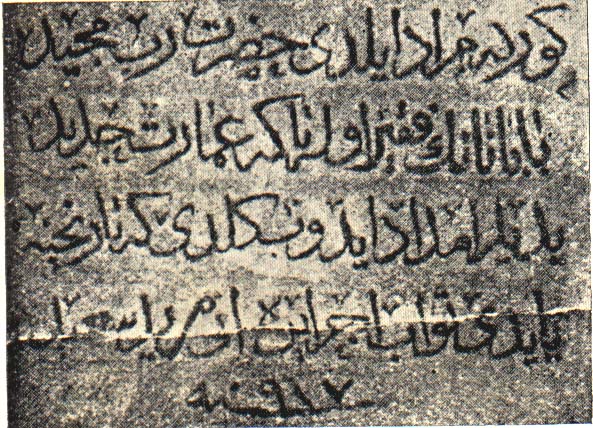
Guru Nanak in Baghdad Swami Ananda Acharya visited the shrine of Guru Nanak in Baghdad and wrote the following:
Upon this simple slab of granite did thou sit, discoursing of fraternal love and holy light, O Guru Nanak, Prince among India’s holy sons.
What song from the source of Seven Waters thou didst sing to charm the soul of Iran!
What place from Himalaya’s lonely caves and forests thou didst carry to the vinegroves and rose-gardens of Baghdad?
What light from Badrinath’s snowy peak thou didst bear to illumine the heart of Bahlol, thy saintly Persian disciple?
Eighty-four nights Bahlol hearkened to thy words of Life and the Path and Spring Eternal, while the moon waxed and waned in the pomegranate grove beside the grassy desert of the dead.
And after thou hast left him to return to thy beloved Bharat’s land, the fakir, it is said, would speak to none nor listen to the voice of man or angel; ....Continued
view – talk – edit – history
- Week 25
Akal Takhat (Punjabi: ਅਕਾਲ ਤਖ਼ਤ) means the Throne of the Immortal and is historically the highest political institution of the Sikhs.
"Akal" means "The Timeless One" - another term for God. "Takhat" means "throne" in Persian. This is one of a total of five takhat of the Sikhs.
The Akal Takhat is an impressive building that sits directly in front of the causeway leading to the Golden Temple in Amritsar.
This institution was founded by Guru Hargobind on July 2, 1606 and was established as the place from which the spiritual and temporal (Miri Piri) concerns of the Sikh community could be acted upon.
It stood as a symbol of political bulwark against the Mughal Emperors in the 17th and 18th century. Various attacks on the Akal Takhat and Harmandar Sahib have taken place in the past by Ahmed Shah Abdali and Massa Rangar in the 18 century.
On June 4, 1984, the Indian Army damaged the outer façade of the Akal Takhat while attempting to flush out Sikh militants in a controversial military operation known as Operation Bluestar. .....More
view – talk – edit – history
- Week 26

In his lifetime Guru Nanak, the founder of the Sikh religion travelled to distant places and one such place was Tibet.
The Guru is well respected by Tibetan Buddhists who consider him a saint; the Dalai Lama, spiritual leader of Buddhists in Tibet, has confirmed it in his discussions with some Sikh leaders that Tibetans revere Guru Nanak as a Buddhist saint under the name of Guru Gompka Maharaj.
According to the local legends of North Sikkim, some people approached the respected Guru with an appeal for help. The lake had remained frozen during most of the year and rendered it incapable as a source of water.
Guru Nanak Dev ji is said to have touched the lake with his foot, and it has never frozen since. Guru Nanak's footprints, a robe and a water-carrying utensil are preserved in a nearby place called Lachen Gompha. Here the locals refer to the Guru as Rimpoche Nanak Guru who on his way to Tibet had rested there. .....More
view – talk – edit – history
- Week 27
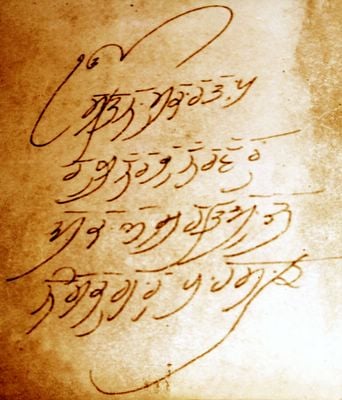
Japji sahib is the name given to the first bani (holy composition) to appear at the very beginning of the Sri Guru Granth Sahib from Page 1 to Page 8 of the sacred Granth (book) of the Sikhs.
The composition consists of the Mool Mantar (root mantar), a set of 38 Pauris (hymns) and a final Salok. Japji sahib is regarded as the most important bani or 'set of verses' by the Sikhs and is recited every morning by all practising faithful of this religion. The word ‘Jap’ means to ‘recite’ or ‘to ‘chant’. ‘ji’ is a word that is used to show respect as is the word ‘sahib’.
This Gurbani (words of the Guru) is said to be the condensation of the whole of the Sri Guru Granth Sahib and whoever recites this Bani with love, dedication and humility will have the complete blessing of Guru Nanak Dev. .....More
view – talk – edit – history
- Week 28
The Sikh Gurus tell us very clearly that slowly our time in this world is running out.
As we live and enjoy the pleasures of mother Earth "plugged" into the world through our sensual inputs, the body's time is slowly seeping away.
The body like any other material item in the universe is slowly withering away; slowly, our life is moving towards the end!
The human body has excellent sensory inputs; the five senses provide us with unlimited amounts of entertainments. In fact most people these days do not have enough time to enjoy all the excitements that are available in the world today. The planet is full of exciting places to visit and enjoy; amazingly fascinating sports, hikes, and adventures to go on; unimaginable films, plays and theatres to visits, etc. - the list is endless.
The quality of the inputs from our senses are almost unmatched anywhere; .....More
view – talk – edit – history
- Week 29
This articles lists Gurbani relating to dancing and singing which are activities where many preconceived prejudices and views exist in the Sikh and Punjabi community. Singing and dancing are great traditions of Punjab which have been in existence for many thousands of years.
These traditions are encouraged and supported by Sikhi and Gurbani provided that they are used as a positive, communal and constructive function for unity and celebration of society. When used to escalate ones ego or pride; or for self-excitation; or for sensual gratification, these same activities are condemned by the Guru. The Guru tells us:
| I am a sacrifice, my soul is a sacrifice, to those who look beautiful in the Name of the Lord, Har, Har. The Gurmukhs sing , the Gurmukhs dance, and focus their consciousness on the Lord. ((1)(Pause)) |
Singing and dancing are great to lift ones mood and bring brightness into the mind; they also provide great exercise and are very beneficial for the circulation of blood in the body. .....More
view – talk – edit – history
- Week 30
Bhai Santokh Singh, (1787 - 1843) the noted author of six important literary works - Naam Kosh, Guru Nanak Parkash, Garb Ganjni Teeka, Balmik Ramayan, Atam Purayan Teeka and his magnum opus, Sri Gur Partap Suraj Granth aka Suraj Parkash, was born on 8 October 1787.
He was the son of Bhai Deva Singh and Mata Rajadi, professional cloth printers of Nurdin village, also known as Sarai Nurdin, 7 km northwest of Tarn Taran in Amritsar district of the Punjab, India.
His father, though poor, was educated and well versed in the sacred texts. He sent his son, after preliminary education at home, to Amritsar where he became a pupil of Giani Sant Singh (1768 - 1832), a renowned man of letters and custodian of Sri Darbar Sahib.
After having studied Sikh Scripture and history, Sanskrit language and literature, poetics, philosophy and mythology at Amritsar for about 15 years, Santokh Singh moved to Buna, an old town on the right bank of the Yamuna in the present Yamuna Nagar district of Haryana, some time before 1813.
There he established himself as a writer, poet, and preacher. .....More
view – talk – edit – history
- Week 31
What influence does the company that we keep have on us? According to the Guru Granth Sahib, the company that we keep has a marked influence on us resulting in disastrous consequences if we are not careful. "Kabeer, I have been ruined and destroyed by bad company" (SGGS p 1369). Bhagat Kabir tells us frankly how his life was destroyed due to the companionship of bad sangat.
Gurbani warns us that through our relationship with others around us we ourselves change. We all know the saying "A person is the product of his or her environment." The Sri Guru Granth Sahib reveals to us that our friendships and the sangat (company) that we keep has a profound influence on our outlook, the way we act, the way we behave and our future development.
The Guru says: "False is friendship with the false and greedy. False is its foundation" (SGGS p 1412). The message again is clear; friendship with a fool, a untruthful person,.... .....More
view – talk – edit – history
- Week 32
Baba Buddha ji (6 October 1506 - 8 September 1631), one of the most venerated, primal figures of early Sikhism, was born on 6 October 1506 at the village of Katthu Nangal, 18 km north east of Amritsar.
After sometime the family settled down in Dhalla village not far away from river Ravi opposite Kartarpur. Bura, as he was originally named, was the only son of Bhai Suggha, a Jatt of Randhava clan, and Mai Gauran, born into a Sandhu family.
Bhai Budha occupies a unique position in Sikh history. He applied the tilak of guruship to five Gurus, saw seven Gurus and remained in close association with first six Sikh Gurus from 1521 to 1631 for over one hundred years. He was the first priest of Harimandir Sahib, and laid the foundations of Dera Baba Nanak and most of the holy buildings at Amritsar.
As a small boy, he was one day grazing cattle outside the village when, in 1524 A.D, Guru Nanak happened to pass by his village. According to Bhai Mani Singh, Sikhan di Bhagat Mala, Bura went up to him and, making obeisance with a bowl of milk as his offering, .....More
view – talk – edit – history
- Week 33
Bichitra Natak (or Bachittar/Vichitra) (Gurmukhi ਬਚਿਤਰ ਨਾਟਕ meaning "Wonderful Drama") is the autobiography of Guru Gobind Singh, the 10th Sikh Guru.
It is a part of the Dasam Granth and is the name given to the third Bani in the second holy scriptures of the Sikhs. This text spans from page 94 to page 175 of the 2326 pages of this holy book of the Sikhs at www.srigranth.org. (Original text is over 1428 pages)
This Bani is an autobiographical narrated by the tenth Sikh Guru, Guru Gobind Singh for the first 32 years of his life. Although the word "Natak" means "drama" in Punjabi, this is no drama. The Guru has outlined the circumstance and history of the time and how great courage and strength was required to overcome the many hurdles that were upon the community.
It starts with a praise of Akal Purakh and then gives a genealogy of Bedis and Sodhis starting from Lord Rama and his two sons. Then comes the author's own biography and includes the battle of Nadaun, Husaini battle and the arrival of Prince Muazzam in the Punjab. It continues the ancient history until 1696 AD. .....More
view – talk – edit – history
- Week 34
Gurdwara Karamsar, Rara Sahib is a result of the charismatic dedication of two noble spirits Sant Isher Singh Ji and Sant Kishan Singh Ji. On the request of Sardar Gian Singh Rarewala, they had stayed in the village Rara Sahib and had made this desolate place their abode.
This village that was transformed from Rara to Rara Sahib by the visit of the sixth Sikh Guru, Guru Hargobind Ji. Rara Sahib is located 22km south-east of Ludhiana, 14km north-east of Ahmedgarh and 22km north-west of Khanna. It lies on the Chawa-Payal-Ahmedgarh road and is situated on the bank of Bathinda branch of the Sirhind Canal.
The witness of Sant Isher Singh Ji's nine-year meditation and penance is the well, which is still intact. This memorial of Sant's devotion is located half a kilometre to the east of the main Gurdwara building. .....More
view – talk – edit – history
- Week 35
Bhai Kahn Singh, of Nabha (30 August 1861- 24 November 1938), is a celebrated Sikh scholar and encyclopaedia writer, who was born on 30 August 1861 at the village of Sabaz Banera which is about 5 miles from Nabha, in what was then territory of the princely ruler of Patiala. His father was Narain Singh and his mother was Har Kaur.
Bhai sahib did not attend any school or college for formal education as his father arranged for him to study languages including Hindi, Brij Bhasha and Sanskrit and also poetry from Pandits in and around Nabha. So that by the age of 10, Bhai sahib could recite freely both the Guru Granth Sahib and the Dasam Granth.
Of the many literary works among Bhai Kahn Singh's collection, Gurushabad Ratandkar Mahan Kosh (1930), an encyclopaedia of Sikh literature, will remain a permanent monument to his unmatched excellence, industry and erudition.
This Punjabi language encyclopedia is not only the first dictionary of Sikh Scriptures and books on Sikh Religion .....More
view – talk – edit – history
- Week 36
In the invocation to Japji Sahib, Guru Nanak provides us with a working definition of the Creator, in mystical but precise terminology -
"Ik-Oamkâr Satinam(u) Karta Purakh Nirbhau Nirvair Akâl-murat(i) Ajuni Saibhan Gur-prasâd(i)".
There is only one Creator, His existence is a reality, He is the only Creator, without fear or rancour, he is beyond death or birth, by himself is he luminous.
By studying Guru Granth Sahib, a Sikh learns that the Creator is Infinite, but HIS presence in His creation can be experienced with a disciplined state of mind. Satguru (the "True spiritual master") guides the Sikhs to experience HIM within.
For this, one needs to be ready to overcome all negative (primal) forces known as ego, anger, lust, deep attachment and greed, which trigger continuous ups and downs in the human mind.
In Gurbani, nothing is as important as the love developed for the Creator.... .....More
view – talk – edit – history
- Week 37
Most of us think that Sikh or South Asian migration to Australia is a recent phenomenon, spanning just the past few decades.
But not many of us know that our Sikh forefathers first came to Australia more than 150 years ago - at a time when the dust was yet to settle from the fall of Ranjit Singh's empire.
Displaying their true enterprising spirit, they crossed the seven seas to come to the land Down Under, in search of a better lifestyle and wages, and quickly endeared themselves to the local population here.
Country towns all over Australia are dotted with memories of these brave Punjabi migrants, who seem to have been welcomed by the locals despite the official "White Australia" policy.
Sadly, they are also forgotten in the annals of history. Initially, the migrants from India were indentured labourers, who worked on sheep stations and farms around Australia. Some adventurers followed during the gold rush of the 1850's. .....More
view – talk – edit – history
- Week 38
ASA KI VAR, is the term recorded in the index to the Guru Granth Sahib but this Gurbani is commonly called "Asa di Var". It is found in the Sikh scripture from page 462 line 17 to page 475 line 10.
The composition is by Guru Nanak, the founder of Sikhi and is usually sung by kirtania (religious musicians) at Sikh congregations or gatherings as part of the early morning service.
This Var is a heroic ode which describes the brave deeds of a hero. It is generally sung to inspire armies going to battle or to inspire people with martial spirit. The tempo of this bani when sung is very measured and positive inspiring a spirit of chardikala in the congregation.
The kirtan is very melodious and the style as mentioned by Guru Arjan is called "Tunde Asraje ki Dhuni" after the name of the contemporary brave and pious Indian king Asraj. One of the hands of the king was amputated, so he was called 'Tunda' meaning crippled. .....More
view – talk – edit – history
- Week 39
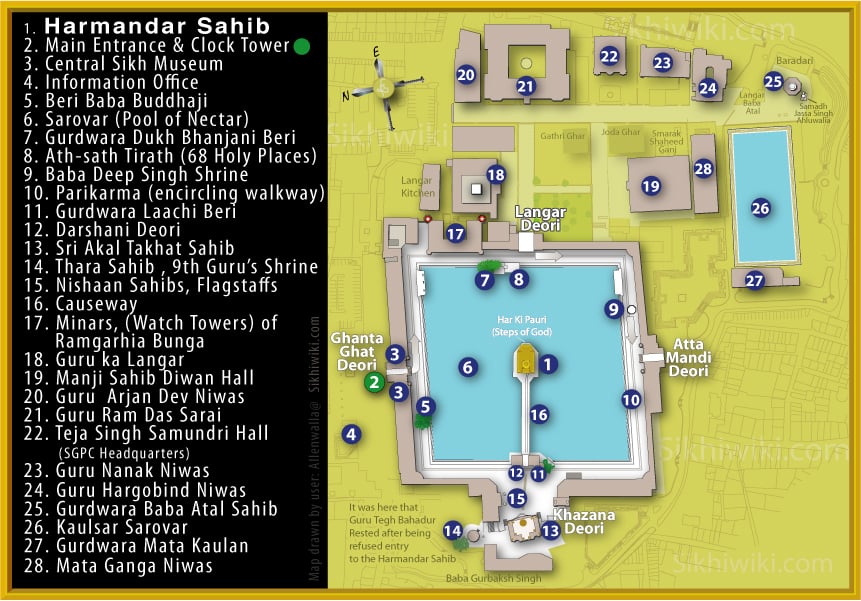
click on the plan to enlarge (by user:allenwalla)
The Golden Temple or Sri Harmandar Sahib is the most popular of all Sikh shrines. Sikh places of worship or Sikh shrines are called Gurdwaras. The Sri Harmandar Sahib is located in Amritsar in Punjab, North India.
Over the years the city has come to be known by the name of the Holy pool in which the Harmandar Sahib stands. Located in the center of the huge "Amritsar" (the pool of nectar) the Harmandar (sanctum sanctorum) symbolizes the synthesis of nirgun and sargun (the spiritual and temporal realms of human existence) for the Sikhs.
The "Mandar" is reached by a causeway from the `swarg dwarn' or Darshini Deori (gateway). .....More
view – talk – edit – history
- Week 40
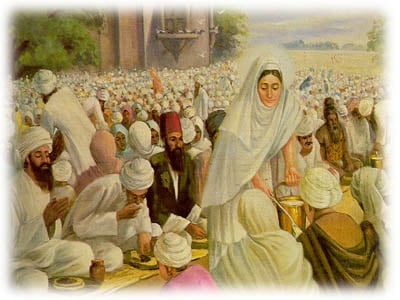
Mata Khivi (1506 - 1582) was born in 1506 to Karan Devi and Bhai Devi Chand Khatri in a small town called Sanghar which is now located in the province of Sindh in Pakistan.
Her father was a shopkeeper and trader, and was a popular man in the neighbourhood. His daughter inherited all his finest attributes of generosity and congenial spirit.
She was married in 1519, when she was 13 years old. Khivi was married to Lahina for 20 years before he became the second Guru of the Sikhs.
There is historical evidence that she had 4 children. Dasu, the eldest was born in 1524. Bibi Amro was born in 1532, followed by Bibi Anokhi in 1535 and son Datu in 1537. The family was content and doing well. As the wife of one of the town's richest men, Khivi must have enjoyed a great deal of respect. Her life was one of luxury and pleasure. .....More
view – talk – edit – history
- Week 41
"Without compassion there is no religion" is a central belief of the Sikhs.
The sanctity of this world is held in place by dharam (path of righteousness) which in turn is a product of compassion or daya. Without compassion, this world would turn into hell and neither justice nor righteousness could be found anywhere. The Sikhs consider the Guru a divine spirit which can guide and provide instructions on how to become a better person and a useful member of the sane and saintly society.
In the Guru Granth Sahib, the "holy book" of Sikhism, is found the following Shabad or sacred verse:
| ਧੌਲੁ ਧਰਮੁ ਦਇਆ ਕਾ ਪੂਤੁ ॥ |
| Ḏẖoul ḏẖaram ḏaiā kā pūṯ. |
| The mythological bull Dharma is the son of compassion;
ਸੰਤੋਖੁ ਥਾਪਿ ਰਖਿਆ ਜਿਨਿ ਸੂਤਿ ॥ ਜੇ ਕੋ ਬੁਝੈ ਹੋਵੈ ਸਚਿਆਰੁ ॥ |
.....More
view – talk – edit – history
- Week 42
BIBI AMRO was the daughter of Guru Angad, the second Sikh Master. On hearing the Gurbani shabad sang by Bibi ji, her husband's uncle Amas Das was impressed and moved to go and meet Guru Angad.
This meeting eventually lead to a lifetime of service to the panth and Guruship to Guru Amar Das, the third Sikh Guru.
Bibi Amro was born in 1532 at village Khadur near Amritsar. She had two brothers, Dassu and Datu, and one younger sister named Anokhi.
She received her early education directly from her parents. Guru Angad Dev taught her, along with the other children, to read and write in Gurmukhi script, which he had revised and simplified.
She also learnt many sacred hymns from her father. Writer of the "Bansawali Namma" tell us that she had learnt by heart sacred hymns like ‘Sidh Goshat’ and others. She had been gifted by nature with a sweet voice. In short, she was a talented girl. .....More
view – talk – edit – history
- Week 43
The history of the Sikhs in East Africa begins with the building of the railways in about 1890. The pioneers who were brought over from India to build the old Uganda Railways were skilled workmen - carpenters, blacksmiths and masons. They were quick to adept to the specialised requirements of their new surroundings and many became fitters, turners and boiler-makers.
These early Sikhs were soon joined by their educated brothers. Eventually, there was no department within the pioneering Railway industry without Sikhs. A number of policemen, ranging from inspectors to constables, were also sent from India to become the vital instrument of maintaining law and order. They remained in the country for several years.
Many, but not all, of the original Sikh pioneers returned to India to be replaced and augmented by others who came of their own choice. Their skills and industry were always in great demand. As Sikhs began to settle in their adopted country a sense of community was imbued by the building of Gurdwaras in all areas of the country where there was a significant number of Sikhs. .....More
view – talk – edit – history
- Week 44
I am President and Vice-Chancellor, Thompson Rivers University, Kamloops, British Columbia, Canada. In December 2004 my wife and I visited India for the first time.
During that trip, most of which was in Punjab, I noticed that almost everyone wore bangles. I asked my host, Mr. Ron Mundi, about his bangle and he told me the religious reason that Sikhs wore the kara. He also mentioned that he attributed his recent good fortune and good luck to wearing it. Several days later, our group travelled to Amritsar to visit the Golden Temple.
While there, I purchased a simple kara for my right wrist. It was my intention to wear it for awhile and then take it off when I returned to Canada several weeks later.
On December 24, 2004 my wife and I flew from Delhi to Krabi, Thailand. We spent Christmas Day snorkelling offshore on an island in the Andaman Sea. .....More
view – talk – edit – history
- Week 45
Salok Mahala 9 are the saloks (type of Gurbani composition) by the ninth Sikh Guru, Guru Tegh Bahadur which form the concluding portion of the Guru Granth Sahib.
They precede Guru Arjan's Mundavani and appear from page 1426 to 1429 of the Sikh holy Granth. This composition consists of 57 (fifty seven) saloks and spans just 4 pages of the holy Granth.
Each salok is a couplet consisting of 2 lines. This Bani was incorporated into the Guru Granth Sahib by Guru Gobind Singh, the last human Guru of the Sikhs. As is commonly believed, they were composed by Guru Teg Bahadur while in the 'Kotwali' (prison) at Chandni Chowk, Delhi, before he achieved martyrdom.
These saloks form an important part of the epilogue when bringing to a close the reading of the Guru Granth Sahib (Bhog) on a religious or social occasion and should thus be the most familiar fragment of it, after the Japji Sahib, the Sikhs' morning prayer.
Salok, in Sanskrit, signifies a verse of laudation or praise. In Hindi and Punjabi, it has come to imply a couplet with a moral or devotional content. .....More
view – talk – edit – history
- Week 46
Meditation is any practice whose goal is attaining a state of higher consciousness. It is the process of retraining our awareness to operate not from the conscious or subconscious level, but from the level of the super-conscious.
Guru Amar Das warns us about our attachment to material things thus: "The three qualities hold people in attachment to Maya. The Gurmukh attains the fourth state of higher consciousness." (SGGS p30).
To attain this higher level of consciousness, one has to disengage the mind away from mundane interactions and join it to a much higher level of awareness.
When considering awareness, it is clear that man is more aware of his surrounding than animals. Man is conscious of his parents, grand-parents and other relatives while animals in general may not be so conscious about some of the complex relations that they may have.
Most animals’ behaviour is driven by their immediate sensory needs while most human behaviour is driven by etiquette and social norms rather than sensory demands. The concept of correctness and fairness has crept in - this can be termed 'consciousness'. .....More
view – talk – edit – history
- Week 47
There are 134 Shabads (hymns) of Sheikh Farid incorporated in the Guru Granth Sahib.
Many Sikh scholars ascribe them to Farid Shakarganj (1173 – 1265) of Pak Pattan, a disciple of the Sufi Qutbuddin Bakhtiyar Kaki.
The tenth in succession to his post was Shaikh Brahm (Ibrahim), also known as Farid Sani or Farid the 2nd, and it is this Farid who Guru Nanak Dev met on two occasions.
Baba Farid is recognised as the first major poet of the Punjabi language and in recognition of his exalted status, the district of Faridkot in Punjab, northern India is named after him. Baba ji was a Muslim with a predominantly Sufi background.
Farid ji has been honoured by the Gurus of Sikhism and his verses were collected and subsequently compiled into the Sikh holy book, Guru Granth Sahib (normally referred to as Gurbani) under three different sections as detailed below:-
First section: The first section consists of two shabads in Raag Asa at page 488 in the Guru Granth Sahib. The Bani starts " Aasaa, The Word Of Shaykh Fareed Jee:" "They alone are true, whose love for God is deep and heart-felt." .....More
view – talk – edit – history
- Week 48
- ਤਿਥੈ ਖੰਡ ਮੰਡਲ ਵਰਭੰਡ ॥ ਜੇ ਕੋ ਕਥੈ ਤ ਅੰਤ ਨ ਅੰਤ ॥
- "There are planets, solar systems and galaxies.
If one speaks of them, there is no limit and no end."
The Sikh scriptures have said great many things about the Universe.
However, although Gurbani has been in existence since about 1499 and the Guru Granth Sahib has been the Guru of the Sikh since 1708, the world has not been listening.
It is clear that there is very little that the world has learnt from the important points mentioned in the Sikh holy text regarding the cosmos.
Carl Sagan (1934 – 1996) was an American astronomer, astrochemist, author, and highly successful popularizer of astronomy, astrophysics and other natural sciences. He was the David Duncan Professor of Astronomy and Space Sciences and Director of the Laboratory for Planetary Studies at Cornell University. He was a consultant and adviser to NASA since the 1950's and briefed the Apollo astronauts before their flights to the Moon. .....More
view – talk – edit – history
- Week 49
The Sikh holy scriptures are perhaps the most recent historic religious text that can be rightly categorised as having 'inter-faith' and 'multi-faith' dimensions from inception.
The Sikh scriptures are unique among the religious "Holy Books" of the world in that they don't just offer spiritual guidance for their own adherents alone but impart guidance and assistance for all the peoples and religious factions of the world.
Many world renowned scholars have recognised the Siri Guru Granth as a supreme treasure for all of mankind. It is accepted by all that the Granth is the true and permanent spiritual guide of the Sikhs; but it has not as yet been generally recognised that it is also a true spiritual guide for all of humanity. Guru Granth Sahib transcends creed and caste, cant and convention. It does not belong to the Sikhs alone.
Considering Islam in particular, perhaps no other historical Islamic verse holds such strong contempt for Muslims who fail to carry out the daily Nimaz as can be attributed to Hazrat Baba Sheikh Farid as recorded in the Shri Guru Granth Sahib. Baba Farid ji was a Muslim whose many verses are preserved only in the holy Granth and cannot be found elsewhere. He was an enlightened soul from the Almighty Lord who left a common message for everyone to learn from.
.....More
view – talk – edit – history
- Week 50
Originality and clarity of the Sikh faith was instrumental in promoting it from its inception in about 1499 and the voluntary adoption by the masses with eagerness and whole-heartedness.
Equality, non-discrimination, true justice, and worship of only One God, are basic values that are well-known and gave the world a simple and universal faith.
Today, some 540 years after the birth of the founder of Sikhi, Guru Nanak, it has more than twenty two million followers, and is the fifth largest faith in the world.
Sikhi is respected world over and is known as a religion of peace and unity of mankind. The Sikhs have only fought wars to defend themselves or others but are probably the only section of society that have never fought wars as aggressors.
For the Gurus promoted all human beings as one and the same, and they are all above discrimination. The Gurus showed real love for all of humanity. Muslims were equally dear to them as Hindus, or any others. It is well known that Bhai Mardana a Muslim, spent his whole adult life with Guru Nanak, accompanying Guru with his Rabab as a musician and the Guru's closest companion everywhere that the Guru went. .....More
view – talk – edit – history
- Week 51
- "Consumed by greed the world is burning and dying; while burning, it cries in agony.
If it meets with the soothing Lord, it will not burn any more.
O Nanak, without Naam and without contemplating the Word, one cannot become fearless." (SGGS p588)
We find today the whole world burning in the fire of greed and hatred. Everyday we read the reports of bloodshed and the loss of innocent lives.
There are some people in the world committing suicide to kill their opponents. So the cycle of revenge escalating evermore on a daily basis.
The circle of casualty is increasing daily and it is coming in our direction. One day, it will hit us! What then?
Knowing this, still most people are too involved in their own everyday little problems and daily struggles to even take a few minutes to stop and think. You probably are thinking right now to stop reading this article. You are thinking I have many other things to do. I need to do X then Y then Z; I will read this later when I have finished X, Y and Z. Right!
Well, that is how the world has got into this diabolical state. .....More
view – talk – edit – history
- Week 52
Gurdwara Pathar Sahib, is a beautiful Gurudwara sahib constructed in the memory of Guru Nanak, about 25 miles away from Leh, on the Leh-Kargil road, 12000 ft above sea level.
The Gurdwara was built in 1517 to commemorate the visit to the Ladakh region of Guru Nanak Dev, the founder Guru of the Sikh faith.
During his lifetime Guru Nanak travelled to many distant places and one such place was Tibet. Guru Nanak is well respected by Tibetan Buddhists who consider him a saint; The Dalai Lama, spiritual leader of Buddhists in Tibet, has confirmed this in his discussions with some Sikh leaders saying that Tibetans revere Guru Nanak as a Buddhist saint under the name of Guru Gompka Maharaj.
Discovery: In the late 1970s, during the construction of the Leh-Nimu road, a large boulder was found by Lamas in the middle of the road bed covered with Buddhists prayer flags. .....More
view – talk – edit – history
- Week 53
- "In this dark era of Kalyug, the singing of Kirtan is king,
the Gurmukhs sing it with their minds focused.
you save yourself and all your clan and go to the Lord's Court with honour. (6)" (SGGS p1075)
In this Shabad on page 1075 of the Sikh holy Granth, the fifth Sikh master, Guru Arjan Dev tells how important it is to sing Kirtan in this age of Kaljug. Kirtan is the singing of the Lord's praises with the accompaniment of musical instruments.
The Sikhs regard the Guru Granth Sahib as their perpetual spiritual guide. At the same time, it is a holy Scripture for all mankind that embodies the revealed truth applicable to all the human race. The holy Granth enshrines the wisdom of many spiritual masters of the East and is the most recent endeavour to allow us to experience the Divine.
Although Kirtan refers to any singing of the Lord's praise, for the Sikhs, it is the singing of hymns (Shabads) from their holy Scriptures. .....More
view – talk – edit – history
Weekly featured article archive
2007 -
2008 -
2009 -
2010 -
1 - 2 - 3 - 4 - 5 - 6 - 7 - 8 - 9 - 10 - 11 - 12 - 13 - 14 - 15 - 16 - 17 - 18 - 19 - 20 - 21 - 22 - 23 - 24 - 25 - 26 - 27 - 28 - 29 - 30
31 - 32 - 33 - 34 - 35 - 36 - 37 - 38 - 39 - 40 - 41 - 42 - 43 - 44 - 45 - 46 - 47 - 48 - 49 - 50- 51 - 52 - 53 - 54 - 55
Today is Tuesday, October 28, 2025; it is now 13:03 UTC


